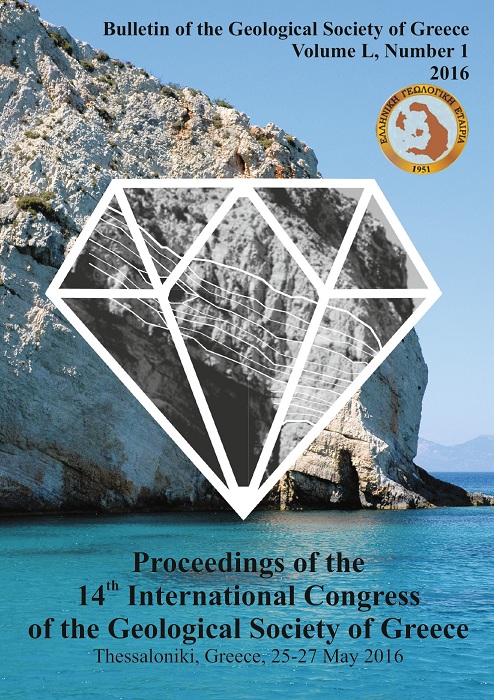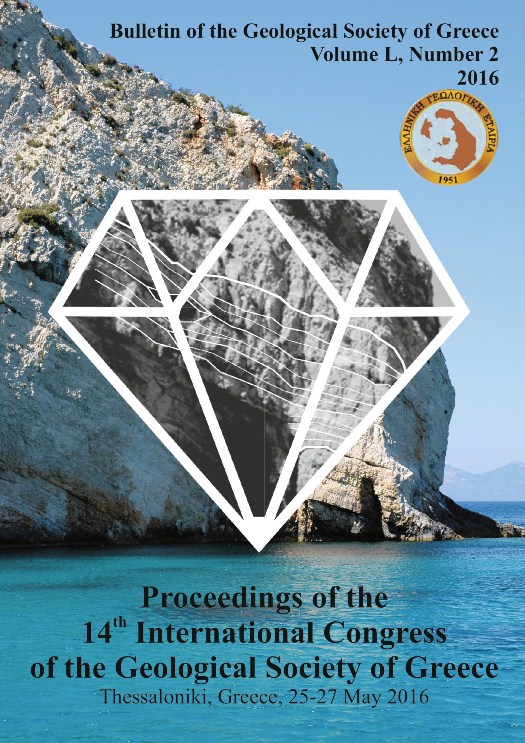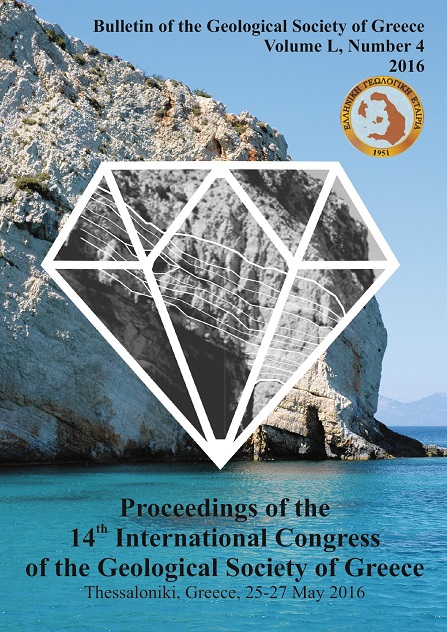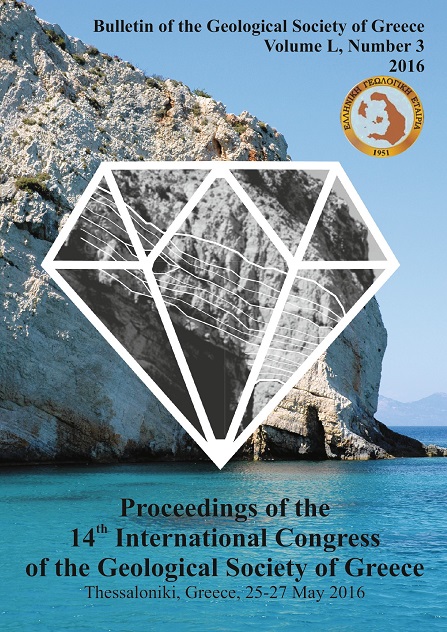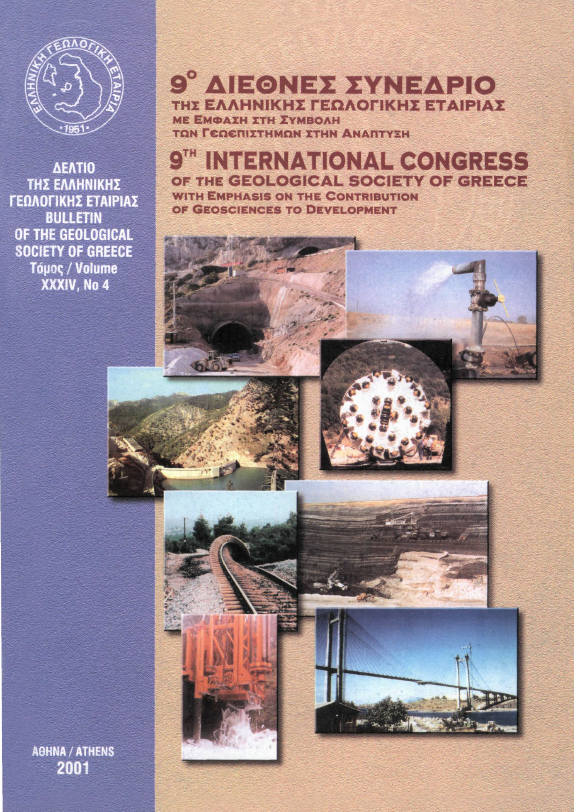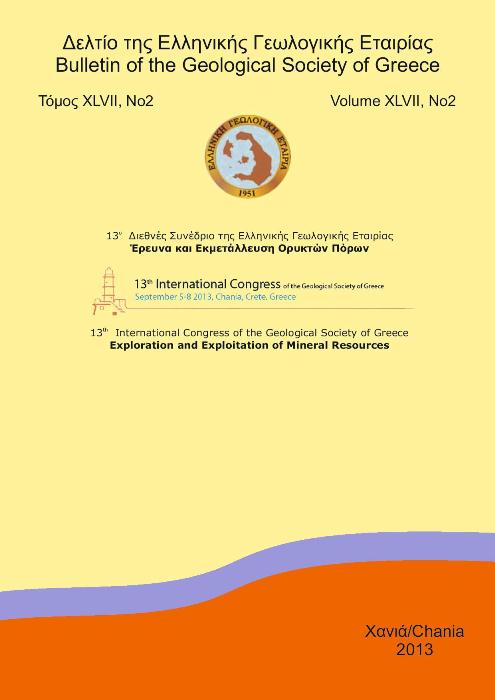Application of Electrical Resistivity Tomography to the detection of the Ermakia (Northern Greece) cavity system

Περίληψη
Η μέθοδος της Ηλεκτρικής Τομογραφίας εφαρμόστηκε για την εξερεύνηση ενός καρστικού σπηλαίου στην περιοχή της Ερμακίας (Μ. Πτολεμαίδας). Οι γεωλογικές έρευνες έδειξαν ότι η γνωστή κεντρική αίθουσα του σπηλαίου της Ερμακιάς "επικοινωνεί" με τουλάχιστον έναν υπόγειο καρστικό έγκοιλο. Αυτά τα στοιχεία μας οδήγησαν στη διερεύνηση της περιβάλλουσας περιοχής με την εφαρμογή δισδιάστατης ηλεκτρικών τομογραφιών σε ένα πυκνό πλέγμα μετρήσεων σε δυο κάθετες διευθύνσεις. Κάποιες από τις γραμμές έρευνας τοποθετήθηκαν πάνω από το χαρτογραφημένο τμήμα του σπηλαίου ώστε να βεβαιωθεί η καταλληλότητα της μεθόδου και να επιτευχθεί βαθμονόμηση των τιμών της ειδικής ηλεκτρικής αντίστασης. Τα αποτελέσματα της αντιστροφής των γεωηλεκτρικών δεδομένων συνδυάστηκαν ώστε να παραχθούν ψευδοτρισδιάστατες εικόνες της αντίστασης. Η ερμηνεία των αποτελεσμάτων είχε ως αποτέλεσμα να εντοπιστούν νέοι θάλαμοι του σπηλαίου όπως επιβεβαιώνεται και από γεωλογικές παρατηρήσεις στο σπήλαιο.
Λεπτομέρειες άρθρου
- Πώς να δημιουργήσετε Αναφορές
-
Vargemezis, G., Tsourlos, P., Papazachos, C., & Kostopoulos, D. (2007). Application of Electrical Resistivity Tomography to the detection of the Ermakia (Northern Greece) cavity system. Δελτίο της Ελληνικής Γεωλογικής Εταιρείας, 40(4), 2060–2069. https://doi.org/10.12681/bgsg.17298
- Ενότητα
- New Technologies in Geophysical and Geological Research

Αυτή η εργασία είναι αδειοδοτημένη υπό το CC Αναφορά Δημιουργού – Μη Εμπορική Χρήση 4.0.
Οι συγγραφείς θα πρέπει να είναι σύμφωνοι με τα παρακάτω: Οι συγγραφείς των άρθρων που δημοσιεύονται στο περιοδικό διατηρούν τα δικαιώματα πνευματικής ιδιοκτησίας επί των άρθρων τους, δίνοντας στο περιοδικό το δικαίωμα της πρώτης δημοσίευσης. Άρθρα που δημοσιεύονται στο περιοδικό διατίθενται με άδεια Creative Commons 4.0 Non Commercial και σύμφωνα με την οποία μπορούν να χρησιμοποιούνται ελεύθερα, με αναφορά στο/στη συγγραφέα και στην πρώτη δημοσίευση για μη κερδοσκοπικούς σκοπούς. Οι συγγραφείς μπορούν να: Μοιραστούν — αντιγράψουν και αναδιανέμουν το υλικό με κάθε μέσο και τρόπο, Προσαρμόσουν — αναμείξουν, τροποποιήσουν και δημιουργήσουν πάνω στο υλικό.



